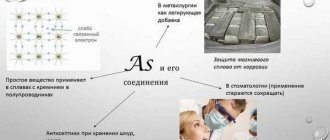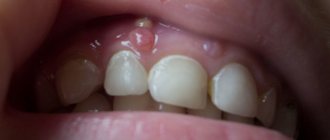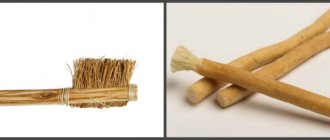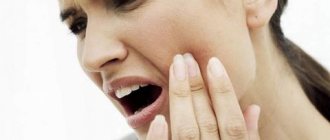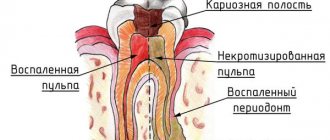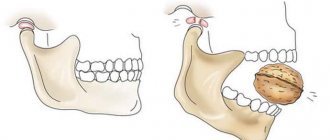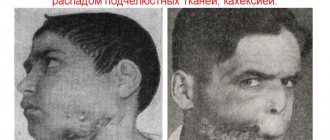Main causes of jaw fracture
Such pathologies arise under the influence of mechanical stress on the bone, the force of which exceeds its strength. Most often, fractures of the maxillofacial region (MFA) occur in the following cases:
- Road traffic accidents.
- Extreme sports.
- Pronounced physical impact.
- Firearms.
Not everyone who finds themselves in such unpleasant situations suffers a broken jaw. The skull bones are very strong, so the incident must be really serious. True, there are people who are more susceptible to non-gunshot fractures of the lower and upper jaw than others.
If the following conditions are present, the bones of the skull break more often and more easily:
- Oncological diseases.
- Inflammatory processes in bone tissue.
- Infectious diseases, especially tuberculosis.
- Taking certain medications.
- Impaired bone mineralization.
- Metabolism problems.
- Acute deficiency of vitamins and microelements.
Why does a mandibular fracture occur?
The splitting of the mandibular bone is caused by a force that can overcome the mechanical resistance of the bone substance. Basically this usually occurs in situations such as:
- applying frontal or lateral blows to the mandibular area of the face;
- impact with the lower area of the face on a hard surface during a fall;
- being hit in the jaw by flying massive objects.
With strong mechanical stress, bone splitting occurs where bone tissue density is minimal. Most often, the chin area, jaw angle, and processes of the jaw branch are affected.
A fracture of the jaw bone can also be caused by a minor mechanical impact. This occurs when the jaw bone substance has undergone severe resorption due to, for example, osteomyelitis, radicular cystic formation or the development of a tumor process. Fractures of this kind are called pathological, and can occur even while chewing too hard food.
Symptoms of a jaw fracture
A bone fracture is always painful, so it is impossible not to notice it. And yet, people sometimes confuse the signs of a jaw fracture and a dislocation and, not realizing the seriousness of the situation, try to solve the problem at home. To correctly identify an injury, you need to know its main symptoms:
- Pain that intensifies when touching the chin and any movement of the jaw.
- Unnatural bone mobility.
- Malocclusion. In many cases, a person cannot close his jaw at all.
Photo: gaps between teeth during a jaw fracture
Gaps almost always form in the dentition.- In most cases, teeth break or fall out.
- Changes in the relief of bones, especially in the chin area. The injury noticeably displaces him.
- Hematomas and bruises appear on the face and in the oral cavity.
- Increased salivation.
- Recession of the tongue.
- In most cases, the patient is completely unable to speak, eat or move his jaw normally.
- General malaise occurs. The patient suffers from headache and dizziness. Sometimes the temperature rises and drowsiness appears.
All these symptoms can be considered general. They are typical for any type of similar injury, but there are also narrower signs on which the classification of fractures of the lower and upper jaw depends.
Comparative assessment of the effectiveness of three methods of gentle immobilization of the lower jaw for fractures
G. A. Khatskevich Doctor of Medical Sciences, Professor, Head of the Department of Pediatric Dentistry with a course of Maxillofacial Surgery at St. Petersburg State Medical University named after. acad. I. P. Pavlova (St. Petersburg)
V. G. Avetikyan Candidate of Medical Sciences, Associate Professor of the Department of Pediatric Dentistry with a course of Maxillofacial Surgery at St. Petersburg State Medical University named after. acad. I. P. Pavlova (St. Petersburg)
I. G. Trofimov Candidate of Medical Sciences, Associate Professor of the Department of Pediatric Dentistry with a course of Maxillofacial Surgery at St. Petersburg State Medical University named after. acad. I. P. Pavlova (St. Petersburg)
Zhang Fan , doctor, postgraduate student at the Department of Pediatric Dentistry with a course in Maxillofacial Surgery at St. Petersburg State Medical University named after. acad. I. P. Pavlova (St. Petersburg)
I. Yuan Ph.D., Lecturer at Shanghai University (Shanghai, China)
V. B. Nekrasova Doctor of Medical Sciences, Professor of St. Petersburg MAPO (St. Petersburg)
Patients with injuries of the maxillofacial area make up about 30% of all patients treated in hospitals for maxillofacial surgery, while fractures of the lower jaw make up about 70-85% of all fractures of the facial bones (Ivasenko P.I., Zhurko E. P., Chekin A.V., Konvay V.D. et al., 2007; Inkarbekov Zh.B., 2009; Bakardjiev A., Pechalova P., 2007).
An analysis of data published in the scientific literature showed that the frequency of complications of mandibular fractures reaches from 10 to 41% (Mubarkova L.N., 2008; Mirsaeva F.Z., Izosimov A.A., 2009), which does not allow us to talk about effectiveness existing treatment methods.
An important pathogenetic link in the development of inflammatory complications in fractures of the lower jaw is a violation of local immune defense, regional blood circulation and innervation in the fracture zone, deterioration of oral hygiene and impaired chewing function (Timofeev A. A., 2004; Berkhman M. V., Borisova I. V., 2007; Magomedgazhiev B. G., 2008; Inkarbekov Zh. B., 2009). Moreover, these changes can be provoked not only by the injury itself, but also by inadequate fixation methods. This especially applies to round aluminum or tape dental splints. Their application is extremely traumatic for the patient and dangerous for the surgeon due to the possibility of hand injury and infection.
In addition, dental splints, used for an average of 30 days, complicate oral hygiene and injure the periodontal border. This leads to the development of pronounced inflammatory changes in the periodontium. Fractures of the lower jaw occur quite often, in which there is no displacement of the fragments and mobility is low. In this case, the immobilization provided by dental splints turns out to be redundant. In this regard, the development of gentle immobilization methods is of particular relevance.
Material and research methods
The work is based on the experience of treating 90 patients with fractures of the lower jaw. Of these, in 48 patients, the method of gentle immobilization—intermaxillary fixation using fixed orthodontic equipment—was used as the main and auxiliary (during osteosynthesis surgery) method of fixation (Fig. 1).
Rice. 1a. The stage of gluing Protekt dental buttons-braces. Immobilization of the lower jaw using elastic rings (the least traumatic method).
Rice. 1b. The stage of gluing Protekt dental buttons-braces. Immobilization of the lower jaw using elastic rings (the least traumatic method).
The comparison methods used were: immobilization of fragments with wrapping transmaxillary sutures - 18 patients (Fig. 2).
Rice. 2a. Immobilization of the lower jaw using two wire wrapped sutures.
Rice. 2b. Immobilization of the lower jaw using two wire wrapped sutures.
Intermaxillary suspension using orthodontic mini-implants - 24 patients (Fig. 3).
Rice. 3. Immobilization of the lower jaw using intraosseous implants of fixators and elastic rings.
The control group included 16 males (22.9 ± 1.2 years), practically healthy.
In the main group of patients, where Protekt braces and lingual buttons were used, biologically active additives (dietary supplements) "Lesmin" for oral administration and individual oral hygiene using dental Fitolon pastes.
For diagnosis and evaluation of results, clinical and radiological immunological, index-hygienic methods, electromyography and Doppler flowmetry were used to assess vascular microcirculation.
Indications for choosing the immobilization method using fixed orthodontic equipment (Protect) are as follows. The independent method of immobilization of the lower jaw, as an alternative to splinting, was used in the following cases: unilateral fractures without displacement or with slight displacement; bilateral fractures without displacement or with slight displacement; fracture of the condylar process without clinically detectable and functionally significant displacement (slight limitation of movements in the temporomandibular joint due to pain, the bite is not disturbed). In case of bilateral fractures of the lower jaw, in a number of cases where osteosynthesis was performed with titanium plates, bracket fixation was used as an additional method (Fig. 4).
Rice. 4. Bilateral fracture of the lower jaw. Immobilization was carried out using osteosynthesis and braces.
The analysis included only those cases where the method of gentle immobilization was used as the main method of fixation of fragments and the patients fully followed the recommendations for oral hygiene proposed by the authors. A total of 66 clinical cases were analyzed. Variants of fractures in percentage and their ratio are presented in Figure 5.
Rice. 5. Variants of mandibular fractures with gentle immobilization methods.
Research results
Patients of all 3 groups were observed from the start of treatment and for 3 months. The final assessment of treatment results was carried out 3 months after injury. Inflammatory complications were taken into account throughout the treatment. Consolidation of fragments occurred in all patients, regardless of the method of gentle immobilization. Malocclusion was detected in only one patient, whose jaw was immobilized using orthodontic mini-implants. In this case, it was possible to restore the bite by selective grinding of the teeth. The effectiveness of treatment with the methods under consideration was the same.
Inflammatory complications were observed with all methods of gentle immobilization, while in the case of using fixed orthodontic equipment (group 1), only one patient (4.2%) had a limited osteomyelitic process due to a tooth fracture left in the gap with pulp necrosis versus 12. 6% when fixed with mini-implants and 16.6% when fixed with wrapping transmaxillary sutures (Fig. 6).
Rice. 6. Frequency (%) of inflammatory complications with different methods of gentle immobilization.
In the second group (using mini-implants), 1 patient had a hematoma suppuration, and 2 patients had a limited osteomyelitic process. In the third group (wrapping transmaxillary sutures), 2 patients had suppuration of postoperative hematomas in the tissues of the floor of the mouth and one patient had chronic traumatic osteomyelitis. Thus, in the group of patients in whom gentle immobilization was performed using fixed orthodontic equipment, the number of inflammatory complications is minimal, which is due not only to less additional trauma during the procedure for immobilizing fragments, but also to the systemic use of dietary supplements.
Questionnaires to study self-assessment of quality of life were filled out by patients 1 month after the injury when the fixation structures were removed. A comparative analysis of the study results was carried out in samples of 12 patients from each group. A study of the “quality of life” profiles in patients using different methods of gentle immobilization showed that the quality of life decreases to a lesser extent in patients with fractures of the lower jaw when fixed using fixed orthodontic equipment and mini-implants (Fig. 7).
Rice. 7a. Comparative assessment of relatively healthy respondents’ QoL profiles with different methods of gentle immobilization. OTMS - wrapping transmaxillary sutures.
Rice. 7b. Comparative assessment of relatively healthy respondents’ QoL profiles with different methods of gentle immobilization. OMI - orthodontic mini-implants.
Rice. 7th century Comparative assessment of relatively healthy respondents’ QoL profiles with different methods of gentle immobilization. NOT - fixed orthodontic technique.
One month after the injury, self-assessment of the quality of life in patients with fractures of the lower jaw with a gentle method of immobilization using fixed orthodontic equipment on all scales of the physical component of health and one scale of the mental component (vitality) was higher than in patients with fixation using wrapping transmaxillary sutures.
When determining the level of oral hygiene, the Fedorov-Volodkina Hygiene Index (FHI) and the severity of periodontal inflammation according to the papillary-marginal-alveolar index (PMA) were recorded; at the initial examination, no statistically significant differences were found in patients of the three groups.
The highest RMA values were found in the group of patients where fixation of fragments was carried out using wrapping transmaxillary sutures - 43.3 ± 2.4%
Subsequently, when examined after 7 days, the level of oral hygiene worsened regardless of the method of gentle immobilization and was assessed in all groups as unsatisfactory. When examined a month later, a further increase in IGPV was observed in all groups, however, in the group using fixed orthodontic technology, the increase in IGPV was found to a lesser extent - 2.4 ± 0.03 versus 2.64 ± 0.07 points (p < 0.01) in the group where fixation was carried out using orthodontic mini-implants.
Compared to the initial values, an increase in inflammation during treatment was observed in all groups of patients. At the same time, the highest RMA values were established in the final study in the group of patients where the fixation of fragments was carried out using wrapping transmaxillary sutures - 43.3 ± 2.4%, and the lowest with the gentle method of immobilization we proposed using fixed orthodontic equipment - 26.4 ± 0.8% (Table No. 1).
Table No. 1. Comparative analysis of the dynamics of dental indices with gentle methods of immobilization of the lower jaw, used as the main ones.
| № | groups | n | IGFV (points) | RMA (%) | ||||
| 1 time | 2 times | 3 times | 1 time | 2 times | 3 times | |||
| 1 | NOT | 24 | 2,08±0,04 | 2,3 ±0,06 ** | 2,4±0,03 *** | 22,0±0,8 | 27,5 ±1,0 *** | 26,4±0,8 ** |
| 2 | OMI | 24 | 1,98±0,07 | 2,32±0,07 ** | 2,64±0,07 *** | 22,2±1,0 | 26,9±1,36 ** | 34,9±1,3 *** |
| 3 | OTMS | 18 | 2,17±0,04 | 2,35 ± 0,09 | 2,5±0,09 ** | 25,1±2,1 | 32,2±1,75 * | 43,3 ±2,4 *** |
| P1-2 | >0,05 | >0,05 | <0,01 | >0,05 | ||||
| P1-3 | >0,05 | >0,05 | >0,05 | >0,05 | ||||
Note: the differences relative to the initial examination are statistically significant: * - p<0.05; ** — p<0.01; *** — p<0.001; 1st time during the initial examination; 2nd time after 7 days (at discharge); 3rd time after 1 month. (when removing structures).
This result is associated with the use of surgical intervention in the comparison groups that stimulates the inflammatory response. Less severe inflammation in the final study could have been influenced by the use of the Lesmin dietary supplement by patients in the experimental group and the use of Fitolon toothpaste.
The study of factors of nonspecific protection and local immunity in the oral fluid of victims with fractures of the lower jaw during the initial examination revealed that in all groups there was a significant decrease in lysozyme activity compared to healthy individuals against the background of activation of mucosal immunity (increased levels of immunoglobulins) with a pronounced imbalance of pro- and anti-inflammatory cytokines (increased IL-8 and decreased IL-4). When examined a week later, a decrease in lysozyme activity relative to the initial data was found only in patients with entwined transmaxillary sutures (65.5 ± 2.1 versus 73.1 ± 2.3% at p < 0.01). In the same group, the lowest levels of lysozyme activity were found after a month (63.6 ± 2.2%), although upon admission in this group the activity of lysozyme was the highest (Fig. 8).
Rice. 8a. Dynamics of lysozyme and sIgA activity in patient groups. Note: NOT - 1st group, OMI - 2nd group, OTMS - 3rd group.
Rice. 8b. Dynamics of lysozyme and sIgA activity in patient groups. Note: NOT - 1st group, OMI - 2nd group, OTMS - 3rd group.
When examined after 7 days, in groups 1 and 2 the level of sIgA decreased slightly, and in group 3 it increased just as slightly. The final examination a month later showed a slight decrease (normalization) of sIgA in group 1, where we used the gentle immobilization method we proposed using fixed orthodontic equipment - 56.1 ± 3.8 versus 72.5 ± 5.78 μg/mg of protein ( p < 0.01) and 77.7 ± 11.4 μg/mg protein.
Studies have shown that when using fixed orthodontic equipment as the main method of fixation, inflammatory complications in the fracture zone are detected in 4.2% of cases
When examined after 7 days, IgG was still at high levels in all groups. Against this background, only in the experimental group of patients was there a decrease in IgM to the control level (from 2.3 ± 0.2 to 1.37 ± 0.1 μg/mg protein, with p < 0.001). A month later, a study confirmed the normalization of IgM levels only in the experimental group, where we used the gentle immobilization method we proposed using fixed orthodontic equipment (1.38 ± 0.1 versus 1.9 ± 0.13 and 2.49 ± 0.26 μg/ mg protein in comparison groups). Moreover, after a month in the experimental group, IgG decreased most significantly (3.77 ± 0.3 versus 4.6 ± 0.45 and 5.0 ± 0.4 μg/mg of protein in the comparison groups).
During the initial examination, the level of IL-8 was 9 times higher than that of the control group; in some patients it was more than 5000 pg/ml, and in some cases IL-4 was not detected at all. Against the background of such large-scale changes in the regulators of the immune response, the smallest were found in patients in the experimental group. Thus, after 7 days they showed a decrease in IL-8 (from 2707.9 ± 198.7 to 1916.3 ± 199.0 pg/ml, with p < 0.01), and when examined a month later, it was in this group has the lowest level of IL-8 (1488.2 ± 183.3 versus 1953.3 ± 202.1 and 2247.1 ± 304 pg/ml in the comparison groups) (Fig. 9).
Rice. 9. Dynamics of IL-8. Note: NOT - 1st group, OMI - 2nd group, OTMS - 3rd group.
The dynamics of IL-4 are less pronounced. In the experimental group, its amount practically does not change during treatment, remaining 2 times lower than in the control group, and in the comparison groups it further decreases. After a month, in patients of group 1, the level of IL-4 was 2.7 ± 0.2 versus 1.12 ± 0.4 and 1.0 ± 0.5 pg/ml in the comparison groups.
Thus, the study of the activity of lysozyme, mucosal immunity and the level of cytokines in the oral fluid showed that in response to a fracture of the lower jaw, the body responds with an acute-phase inflammation reaction, accompanied by a decrease in lysozyme activity against the background of activation of mucosal immunity and a pronounced imbalance of pro- and anti-inflammatory cytokines. When using the method of gentle immobilization developed by us against the background of systemic administration of the Lesmin dietary supplement, the normalization of disorders proceeds faster (in some cases, improvement occurs after 7 days), and when examined a month later, it is more pronounced, which is due to the less traumatic method of fixation and systemic administration of the biomodulator Dietary supplement "Lesmin"
conclusions
- As a support for mandibulo-maxillary fixation, it is proposed to use non-removable orthodontic equipment: dental braces and lingual buttons, which will eliminate surgical intervention, which complicates the course of the restoration process in periodontal tissues, and will simplify and increase the effectiveness of treatment for patients with mandibular fractures.
- When using fixed orthodontic equipment as the main method of fixation, inflammatory complications in the fracture zone were detected in 4.2% of cases. When using Fitolon toothpaste and Lesmin dietary supplement, better results were registered in comparison with the control. IGFV 2.4 + 0.03 versus 2.65 + 0.1 points at P < 0.05, and a decrease in the intensity of periodontal inflammation RMA 26.4 + 0.1 versus 36.8 + 2.0% at P < 0.001 .
- Our data confirm the regulatory effect of cytokines in the development of inflammation. The initial increase in IL-8, as a consequence of injury, is physiologically determined and stimulates the mucosal immune system, without having a negative effect on such a factor of nonspecific defense of the oral cavity as lysozyme. However, high values of IL-8 after a month negatively affect the restoration of lysozyme activity. At the same time, a decrease in the level of the anti-inflammatory cytokine IL-4, established at all stages of the study, is accompanied by an increase in lysozyme activity.
- Restoration of lysozyme activity against the background of a decrease in elevated immunoglobulins in the oral fluid and a decrease in the degree of imbalance between pro- and anti-inflammatory cytokines leads to a decrease in the inflammatory reaction in the periodontium and an improvement in the hygienic state of the oral cavity, which confirms the effectiveness of the use of Fitolon toothpaste and the systemic use of the Lesmin dietary supplement. in patients with fractures of the lower jaw against the background of a gentle immobilization method using fixed orthodontic equipment.
- A comparative analysis in three groups of patients with gentle immobilization showed that in the case of using fixed orthodontic equipment, the number of inflammatory complications is minimal, which is apparently due not only to less additional trauma during the procedure for immobilizing fragments, but also to the systemic use of dietary supplements. Moreover, a month after the start of treatment, these patients’ self-assessment of quality of life is higher than with other methods of gentle immobilization.
- With the gentle immobilization method we developed, the normalization of identified violations of local nonspecific and immune defense proceeds faster - in some cases, improvement in indicators occurs within 7 days (decrease in sIgA, IgM and IL-8), and when examined a month later, the normalization is more pronounced (decrease in sIgA, IgM and IL-8 with an increase in lysozyme activity), which is due to both a less traumatic fixation technique and systemic administration of the biomodulator dietary supplement "Lesmin", which increases nonspecific resistance of the oral cavity and has an antioxidant effect.
Classification of jaw fractures
Experts distinguish more than a dozen different types of fractures, and the treatment of the patient depends entirely on whether the injury belongs to one type or another. First of all, fractures of the lower and upper jaw can be distinguished, but these groups are also divided into several smaller ones depending on a number of signs.
Types of jaw fractures by severity of injury
- Closed fracture. It damages the bone, but the surrounding soft tissue remains intact. This type of pathology is less dangerous, since the treatment lasts relatively short. A non-gunshot closed fracture of the lower jaw heals without complications in 3–4 weeks.
- Open fracture. Bone fragments can move to the side and damage soft tissues, blood vessels and joints. This pathology can be recognized by severe bleeding. Open fractures of the lower jaw are more common.
An open injury is doubly dangerous, since it carries a high risk of bacterial infection and severe blood loss. Medical assistance must be provided immediately.
Types of jaw fractures based on displacement of fragments
- Fracture without displacement. With such an injury, the bone can even be divided into multiple fragments, but they are in a standard position and do not move relative to each other. The crack may be incomplete. Injury is easier to treat and carries with it minimal consequences.
Displaced fracture. In this case, the jaw fragments change their position, which causes additional pain and complicates treatment. With open injuries, the bone is always displaced. A displaced fracture of the lower jaw is more common than the same injury to the upper part of the skull. Damage can be recognized by severe swelling and facial asymmetry.- Comminuted fracture. The bone splits into separate fragments of different sizes, which are arranged in a chaotic manner. In most cases, the pathology is accompanied by damage to soft tissues and requires immediate medical attention and long-term treatment. Often, after hospitalization, patients also have to see a plastic surgeon.
Types of jaw fractures by location of injury
The types of fractures of the lower and upper jaw are determined not only by symptoms, but also by location:
- A midline fracture is located in the middle of the bone.
- If the injury is located near the lateral incisors, it is defined as incisive.
- A canine fracture is an injury to the third teeth of the upper or lower jaw.
- A crack in the chin area is designated as mental. It is one of the most common jaw injuries due to the fact that a person's chin protrudes noticeably.
- An angular fracture can only occur in the lower jaw. It is located in the corners of this bone, closer to the base of the skull.
Doctors may use a more extensive classification of such injuries. It’s even difficult to imagine exactly how many types of pathology there are - each case is individual in its own way.
Diagnostics
A jaw fracture can be diagnosed based on a single visual examination. However, further examination is necessary to identify the type, nature of the damage, and the presence of complications.
To make a final diagnosis the following are used:
- simple radiographic examination;
- orthopantomography;
- CT;
- MRI.
Important! If the victim breaks his jaw as a result of pathological bone conditions, the diagnosis must be supplemented with other laboratory and radiographic studies. This is necessary to identify the true cause of the injury.
This is how an MRI of the jaw is performed.
Since fractures of the lower jaw may be accompanied by damage to other organs, consultation with a neurologist, otolaryngologist, or ophthalmologist is necessary. During the examination, blood pressure levels and heart rate are constantly monitored.
First aid for a broken jaw
The very first thing to do if a person breaks their jaw is to call an ambulance. After this, measures can be taken to alleviate the victim’s condition:
- Since damage most often occurs in the event of an accident, fights, or falls, first of all you need to make sure that the person’s life is not in danger.
- If there are several non-gunshot injuries, the jaw should be addressed first. The exception is open fractures of other bones if the head injury is closed.
- If there is bleeding, apply a clean, preferably sterile, cloth to the wound. If the damage is minor, cotton wool will do.
If the patient is unconscious, carefully turn him on his side. Clear your mouth of blood clots and vomit. This must be done extremely carefully, wrapping your finger in a clean cloth.- Then you should put the patient in a comfortable position and try not to move him anymore. If the patient is conscious, a sling-shaped bandage is applied to the broken jaw, as in the photo on the right.
- Ice is applied to reduce pain. If possible, it is worth giving the victim painkillers. In this case, an intramuscular injection will be most effective. Analgin, Naproxen, Revalgin are suitable tablets.
Since the patient is unable to swallow, the painkiller tablet must be crushed and dissolved in water. If the person is unconscious, you can pump the liquid into a syringe without a needle and gently pour the medicine directly down the throat.
Compensation for a broken jaw in two places, with displacement.
22.1. Even if you ask for a million, it’s your right, but here you can advise everyone on their own requests.
22.2. Ministry of Health and Social Development dated April 24, 2008. According to the Rules, medical criteria for injuries are approved and reflected in a special Appendix to the designated Order. According to the conclusions obtained during the expert's examination, the severity of the injury is established. If the jaw area of the face is injured during beating, the severity of the consequences is determined to be medium. That is, over a long period of time, the victim’s body is capable of recovery. If the violations turn out to be reversible, Article 112 of the Criminal Code of the Russian Federation comes into force, reflecting the norms of liability for damage to health of moderate severity. You have the right to demand the amount of expenses incurred for treatment - this must be documented. You have the right to claim lost earnings if you are officially employed and were on sick leave. In your situation, for example, to someone who is accused under 112 of the Criminal Code of the Russian Federation - 200,000, to someone who is charged under 116 - 30,000. The court will most likely collect less, but if you declare a small amount, although there are grounds to collect more, the court will not be able to do this , as it has no right to go beyond the requirements you stated.
Treatment of a jaw fracture
Splinting
Once the patient is admitted to the hospital, he is sent for an x-ray to find out if the jaw is broken and to determine the exact location and severity of the injury. The stages of treatment depend on the classification of the fracture. In most cases, splinting will be done, but additional therapies may be prescribed.
A special plastic device or wire structure is placed on the jaw on the damaged side. In case of injury on both sides of the bone, a more complex and rigid product is used. After installing the structure, a series of loops are formed in the smile area. The hooks on the upper and lower jaws are connected by elastic bands.
The main task of splinting is to maintain the immobility of bone tissue for exactly as long as the jaw fracture heals. Treatment usually lasts from 3 weeks to six months.
For displaced angular injuries, a bone suture is required. To do this, the crack is exposed from soft tissue, and small holes are made in the bone fragments along the entire length of the fracture. Then the parts are connected to each other with a special wire and covered with soft cloth.
After the main operation, rehabilitation begins. For faster tissue regeneration, magnetic therapy, ultraviolet irradiation, calcium electrophoresis at the fracture site, or other therapeutic procedures are used.
Treatment of a jaw fracture at home
After 3–4 weeks, if the fracture is uncomplicated and the person is no longer in danger, he can be discharged from the hospital. Usually by this time the bone has not completely healed, so the specialist gives a number of recommendations for continuing treatment at home:
- For an open fracture of the jaw, antibiotics are prescribed; after discharge from the hospital, you need to continue taking them at home.
- To speed up healing, multivitamin complexes rich in calcium and substances that improve its absorption are prescribed.
- You can treat a crack in the jaw with folk remedies, but before using them you need to consult a doctor. Most of all, experts approve of paraffin therapy.
- After removing the splint, you will have to wear a special fixing bandage for several months - first it is worn all day, and then only at night.
- If the splint has already been removed, the jaw needs to be developed. Every day for a few minutes a person should do simple exercises: move his jaw from side to side, open and close his mouth wide.
All of the recommendations listed can only be used as a supplement to the main treatment that takes place in the hospital. It is impossible to cure a fracture without medical help.
Nutrition for a jaw fracture
Due to the injury, the process of eating becomes more difficult, because it hurts the patient to even open his mouth, not to mention chewing. And yet a person must receive a sufficient amount of nutrients. This determines how long it will take for a crack in the jaw to heal. If there is a deficiency of nutrients, the treatment period increases and more complications appear, so the patient is fed according to certain rules:
- A rubber tube is inserted directly into the patient's throat, through which a nutrient solution or liquid food will be administered. Usually the tube is placed through an area where one or more teeth are missing, which happens quite often when the skull bones are damaged. If there is no gap, then the tube is placed in the mouth through the gap after the wisdom tooth. Such nutrition is convenient because it is possible even at home.
- If a patient with a jaw fracture is in intensive care, doctors make droppers with a special solution rich in nutrients, vitamins and minerals. If this is not possible, a nutritional enema is used.
- The basis of the diet is ground meat mixed with milk or broth, baby food, pureed soups, fruit and vegetable dishes, and liquid porridges.
- The patient will need more calories than he normally needs. In addition, the vitamin and mineral value of the diet increases.
Nutritional Features
A jaw fracture takes at least 30 days to heal.
During this period, the patient should not place heavy loads on the jaw.
The daily menu should include broths and soups, soft vegetables and fruits, thoroughly ground or grated.
The presence of dairy dishes in the diet -.
After removing the splint, it is not recommended to immediately switch to your favorite food. You need to be on a gentle diet for some time. This is necessary to normalize the functioning of the stomach.
Consequences of a jaw fracture
Such a complex injury cannot go away without a trace; even with proper treatment, certain complications are present:
- Deformation of facial features. Asymmetry arises, sometimes very noticeable (see photo). Typically, this consequence occurs when the jaw is fractured with displacement. With less dangerous pathologies, such a change is almost imperceptible.
- Loss of teeth and their curvature. In many cases, gaps form between the teeth and the bite is disrupted.
- The remaining teeth may become loose when chewing, most often this phenomenon occurs after an angular fracture.
- The vast majority of patients experience jaw crunching after treatment for a fracture. Moreover, this can last until the end of life.
- Due to liquid nutrition, problems with the gastrointestinal tract arise.
You need to understand that a head injury is always dangerous. Only correct and timely medical care will reduce the number of consequences to a minimum.
How to properly treat a jaw fracture?/Family doctor/ASYL ARNA
President of BC Krasnye Krylia Vladislav Kapustin says he is not taking part in the process: The club has nothing to do with the night fight between American defender Aaron Miles and local university student Maxim Borzov, the president said. “This is a personal matter for Miles himself.” Everything that happened did not happen on the basketball court, but in the basketball player’s personal time.
We know that our American Legionnaire has hired an attorney to handle his case and represent his interests.
Consequences of improper healing
Adverse consequences of incorrect fusion of damage to the condylar process of the temporomandibular joints:
- bite deformation of varying degrees of complexity;
- incomplete closure of the lower jaw;
- violation of chewing function;
- deterioration of the articulation capabilities of the joint;
Types of improper healing of injuries with dislocation of both joints, in which it is possible to do without surgery:
- The appearance of connective tissue at the fracture site between the head of the process and the lower jaw;
- The same formation, but with the base of the skull;
- Fusion of the articular head with a fragment of the lower jaw in a non-functional position;
- Formation of a false joint at the fracture site;
- Bone fusion of the articular head with the temporal bone of the skull and the occurrence of pseudarthrosis at the bone fracture line;
It should be noted that alternative treatment for such consequences is possible only with timely intervention in the early stages of the development of these pathologies.
